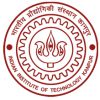 262
262i dont think so..
take x=6,y=8,z=10
they form a pythagorean triplet but gcd(x,y)=gcd(y,z)=gcd (z,x)=2
 39
39i am sorry have to post more of the question .. please wait
 39
392) take this as the second question
Well the question i wanted to ask was that if x,y,z form a pythogorean triplet and they are a primitive triplet that is a triplet in the simplest form
this means 8,6,10 can be simplified back to 3,4,5 so primitive triplet means gcd(x,y,z)=1 then u have to prove that x,y,z are pair wise co prime
 21
212 one is easy...pls give some time for the 1st one
Let x,y,z be a primitive soln, by definition gcd(x,y,z) = 1 cz otherwise it wont be the simplest.
then if a prime divide any two of x,y,z it must divide the other..and that explains why the numbers must be pair wise coprime
 21
211) i was trying with lagranges identity but not getting anywhere..hint?
 341
341This has a quick answer if you use the theory of rings.
We write the equation as p=(x+iy)(x-iy)
The numbers of the form a+bi, a, b \in \mathbb{Z} are called Gaussian integers and they form what is known as a UFD (Unique Factorization Domain), i.e. just like integers they can uniquely be resolved into prime factors (up to units which here are ±1,±i)
Now we claim that x+iy is a prime.
Otherwise we would be able to write x+iy = (a+bi)(c+di)
where a^2+b^2 \ne 1; c^2+d^2 \ne 1
But that would mean p = (a^2+b^2)(c^2+d^2) which is absurd.
Likewise x-iy is also a prime
So in the ring of gaussian integers p = (x+iy)(x-iy) is the only factorisation possible.
It follows that there is up to permutation and sign, a unique solution to x2+y2=p
 341
341i guess there is a solution with more elementary concepts, which is what b555 may be looking for. So please do try
 21
21yup..prophet sir..its trivial by gaussian integers..only 3 days back i learnt this...couldnt think of using it here though.....[2]
I think lagranges identity will be help full..infact any even power of p can be represented as sum of squares in two ways..but [2]
altogether [2]
plz if u get dnt post the sln ..atleast 2day
 341
341honestly i coudnt think of a simpler proof which is why i made use of "heavy machinery" :D.
 21
21Let p = x^2+ y^2 = m^2 + n^2
then p^2= (mx+ ny)^2+ (xn - ym)^2 (*), p^2= (nx+ my)^2+ (mx- yn)^2
Now comes my trick [3]
p|mn(x^2 + y^2)+ xy(m^2+ n^2)\Rightarrow p|(xm+yn)(xn+ym) [4]
Routine finishing left.
It follows that
Case 1: p|(xm+yn)\Leftrightarrow p^2|(xm+yn)^2\Rightarrow p^2\leq (xm+yn)^2\Rightarrow (xn-ym)^2= 0(From (*)) \Rightarrow xn= ym
Let \frac{x}{y}= \frac{m}{n}= k\neq 0
We had x^2+ y^2 = m^2+n^2\Leftrightarrow y^2(1+k^2) = n^2(1+k^2)\Leftrightarrow y^2=n^2
Case 2: p|xn+ym. Same way as above, we can show that y^2= m^2
 21
21had to work since it was posted..:D